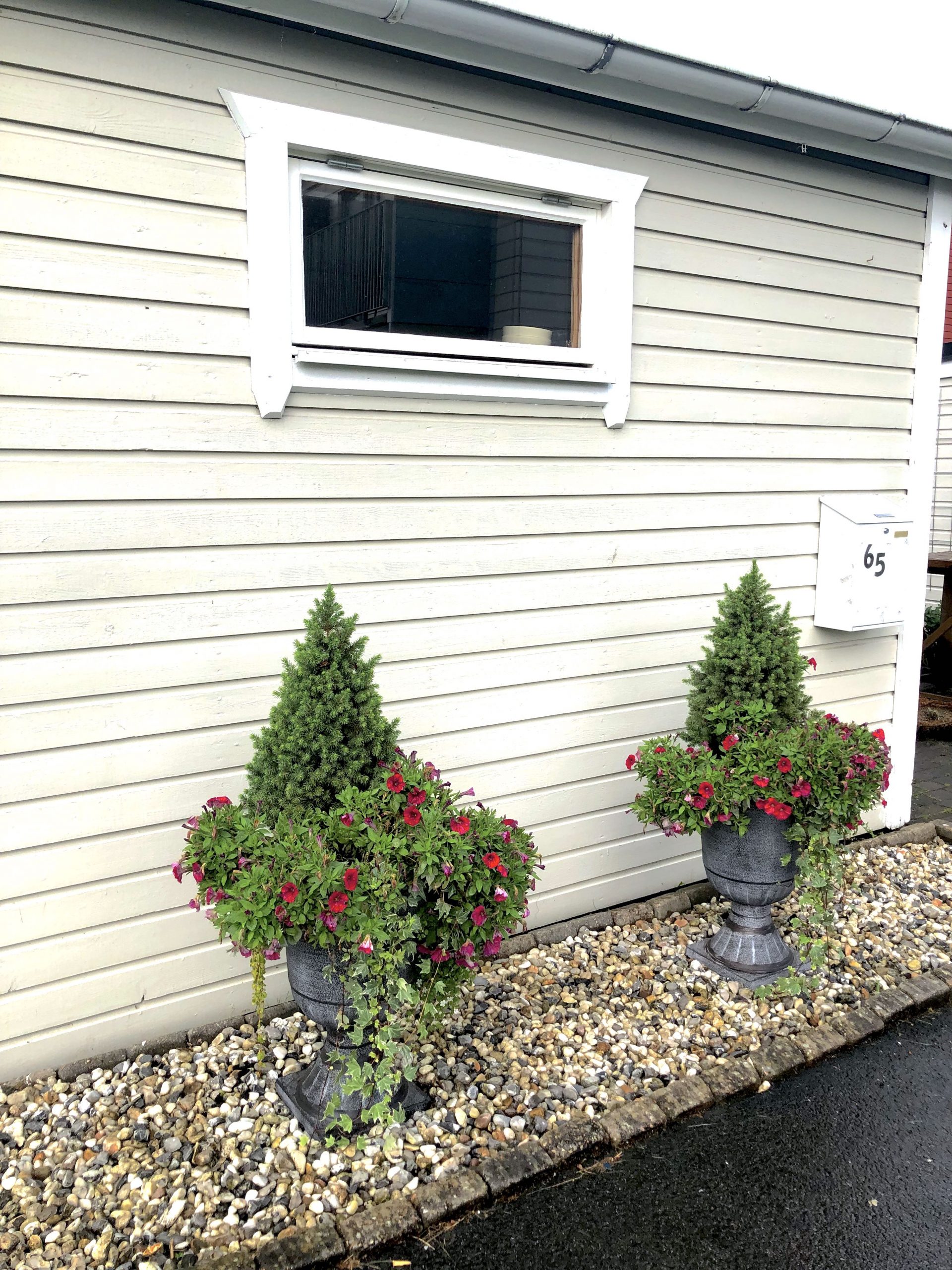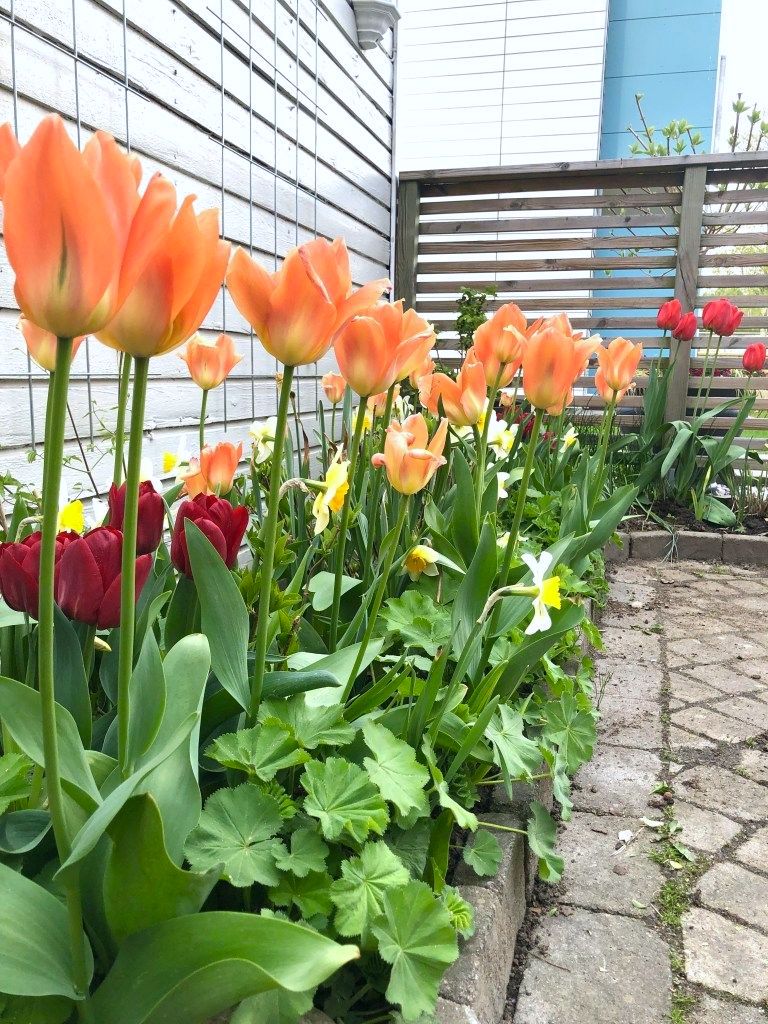Höstkrukor i grönt och vitt
Det är dags att byta ut sommarblommorna till höstväxter. I år blir det fina höstkrukor i grönt och vitt. Här är några tips på hur du får fina höstkrukor som står sig i flera månader.

Ny jord i krukan
Sommarblommorna som har gett med sig får flytta till komposten. Eftersom sommarblommor tar upp en hel del näring från jorden brukar jag passa på att byta ut den. På så vis kan jag vara säker på att mina höstväxter får den näring de behöver.

Hur många växter får plats?

Svaret är fler än man tror. Speciellt på hösten när växterna inte längre växer speciellt mycket brukar jag fylla upp krukorna ordentligt. Jag vill gärna inte att jorden skall synas och att krukan ser fin ut från dag ett så jag packar den full.
I en 40 cm bred urna får det plats 7-9 växter. I detta fall blev det:
1 Sockerstoppsgran
2 Prydnadskål
2 Ljung
1 Murgröna
1 Bacopa (kvar från sommarkrukan)
Ett recept för fina höstkrukor
Kanske har du satt ihop växter i en kruka men inte blivit helt nöjd? Färgerna är fina, blommorna friska men det ser inte rätt ut och du kan inte förklara varför? Svaret brukar ligga i formen på växterna. En lyckad kombination behöver tre ”våningar” av växter – det som på engelska bruka kallas för ”thrillers, fillers and spillers”. Du bör ha:
- En växt som växer upprätt (en uppstickande thriller)
- En eller flera växter som breder ut sig, fyller ut och väver ihop (filler)
- En eller ett par växter som hänger (spiller) över kanten.
I detta fall är Sockertopsgranen i mitten min ”thriller”, prydnadskålen och ljungen min” filler” och mugrönan samt bacopan mina ”spiller”.











































